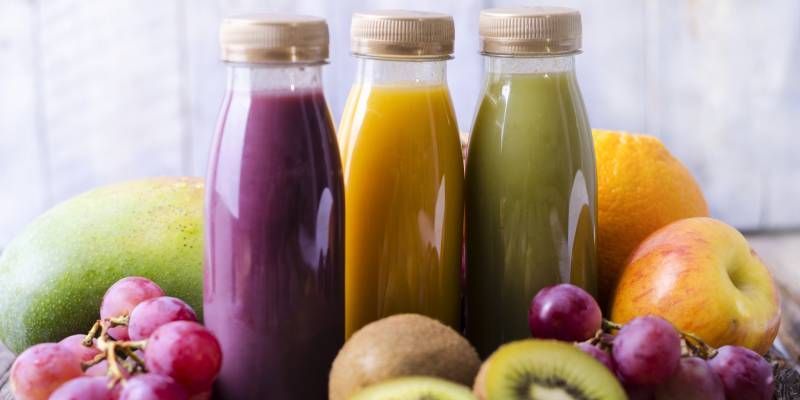Fruit concentrate: get to know its differences with puree and pulp

Did you know that choosing between fruit concentrate, puree, and pulp can have a significant impact on the quality of food products? Therefore, understanding the differences between these three natural ingredients is critical in today's fast-paced food industry.
Below, we discuss their various properties, applications, and how each influences the flavor or texture of the finished product. Let's have a closer look.
Fruit concentrate: differences with puree and pulp
Firstly, you need to know that the three differ in composition and texture. Hence, understanding the difference between fruit concentrate, fruit puree, and pulp of fruit requires delving into their unique characteristics and applications.
Following, a brief explanation of each, from the production process to their applications.
Fruit concentrate
They are obtained by eliminating the fruits' water content, leaving only their essence. Keeping this in mind, evaporation generates this process, concentrating the taste and natural sugars.
The technique for obtaining it is as follows:
1. First, press or squeeze fresh fruit or vegetables to make natural juice.
2. Next, filter the juice to eliminate solids like pulp and other unwanted particles.
3. Eventually, evaporate the filtered juice to remove a large portion of its water content.
4. After reaching the desired concentration, cool the concentrate and, lastly, store it under suitable conditions for future use.
Effectively, its high concentration in fruit pairings makes it ideal for beverages, allowing dilution without losing flavor. People also use it to make jams and jellies, as well as incorporate it as a natural sweetener in baked goods..
Fruit puree and pulp
On the other hand, fruit pulp and puree consist of the edible parts of these fresh foods that are processed by:
· Extraction of their juice,
· Retention of the pulp and fiber.
Consequently, it preserves the sugars, amino acids, vitamins, and minerals found in fresh raw materials. Besides, the taste and nutritional content are almost equal to that of fresh fruits.
Therefore, this results in products with a high concentration of suspended solid components. It also enables the retention of the fruit's nutrients and fiber to the greatest extent possible.
The most prevalent operations are:
· Washing and sorting.
· Fruit destoner.
· Crushing.
· Pulping.
· Separation and filtration of pulp or puree.
Fruit pulp and purees are versatile ingredients that can be utilized in a wide range of dishes. They are ideal for desserts, sauces, and other culinary delights.
Why is it important to understand the differences?
In conclusion, it is clear that understanding the differences between fruit concentrate, puree, and pulp is essential in the food sector. Each has distinct characteristics that influence fruit flavors and the texture of items manufactured with them.
It also allows for correct selection, which improves the quality of a wide range of products, including beverages and baked goods. Which is your favorite?
Bibliographic references
- Ahmad, A., & Muhammad, T. (2018). Chapter 12 - Fruit Juice Concentrates. En R. Gaurav, & T. Brijesh, Fruit Juices (págs. 217-240). Fruit Juices.
- Ávila, R., y Bullón, J. (2013). La concentración de jugos de fruta: Aspectos básicos de los procesos sin y con membrana. Rev. Fac. Ing. UCV.
- Beyond. (2021). Introduction Of Fruit Pulp/Puree Production Process. Beyond.













